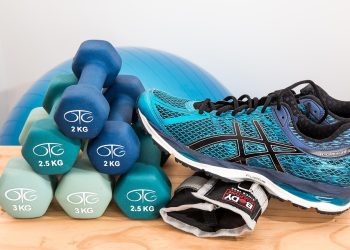Achieving your fitness goals requires more than just sporadic bursts of effort. Consistency is the key. It’s about building sustainable habits and making exercise a regular part of your life. But let’s face it, sticking to a workout routine can be challenging. Life gets in the way, motivation wanes, and sometimes, the couch just seems far more appealing. This article provides practical strategies to help you overcome these hurdles and cultivate consistent workout habits.
Understanding the Importance of Workout Consistency
Why is workout consistency so crucial? It’s not just about seeing results faster (although that’s definitely a perk!). Consistency offers a multitude of benefits that extend far beyond aesthetics:
- Improved Physical Health: Regular exercise strengthens your cardiovascular system, improves bone density, boosts your immune system, and helps manage weight.
- Enhanced Mental Well-being: Exercise releases endorphins, natural mood boosters that can reduce stress, anxiety, and symptoms of depression. Consistent workouts also improve sleep quality.
- Increased Energy Levels: Contrary to what you might think, regular physical activity can actually increase your energy levels throughout the day.
- Better Long-Term Health Outcomes: Consistent exercise can significantly reduce your risk of developing chronic diseases such as heart disease, type 2 diabetes, and certain types of cancer.
- Habit Formation: By consistently working out, you transform exercise from a chore into a deeply ingrained habit.
Top Tips for Building Workout Consistency
Now, let’s dive into actionable strategies you can implement today to improve your workout consistency:
1. Define Clear and Realistic Goals
Start by setting specific, measurable, achievable, relevant, and time-bound (SMART) goals. Instead of aiming for a vague goal like “get in shape,” try something like “walk for 30 minutes, 3 times a week for the next month.”
Example:
- Not SMART: “I want to lose weight.”
- SMART: “I want to lose 2 pounds per week for the next 8 weeks by exercising 4 times a week and following a balanced diet.”
Breaking down larger goals into smaller, more manageable steps can make the process less daunting and more motivating.
2. Find an Activity You Enjoy
The most effective workout is the one you actually enjoy doing. Experiment with different activities until you find something you genuinely look forward to. This could be anything from running and swimming to dancing, hiking, or even rock climbing.
Consider:
- Your Interests: What do you like to do in your free time? Can you incorporate physical activity into those interests?
- Your Personality: Are you a social person who enjoys group fitness classes, or do you prefer solo workouts?
- Accessibility: Choose activities that are easily accessible to you, whether it’s a gym near your home or a park with trails.
3. Schedule Your Workouts and Treat Them Like Appointments
Treat your workouts as non-negotiable appointments in your calendar. Schedule them in advance and protect that time as you would any other important commitment. Set reminders on your phone or calendar to ensure you don’t forget.
Tips:
- Pick specific days and times: Don’t just say “I’ll workout sometime this week.” Be specific. “I’ll workout on Monday, Wednesday, and Friday at 7:00 AM.”
- Prepare in advance: Lay out your workout clothes the night before, pack your gym bag, or prepare your pre-workout snack.
- Communicate your schedule: Let your family and friends know your workout schedule so they can support you.
4. Start Small and Gradually Increase Intensity
Don’t try to do too much too soon. Start with shorter, less intense workouts and gradually increase the duration and intensity as you get fitter. This will help prevent injuries and burnout.
Example:
- Week 1: 20-minute walk, 3 times a week
- Week 2: 25-minute walk, 3 times a week
- Week 3: 30-minute walk, 3 times a week
Listen to your body and don’t push yourself too hard, especially when you’re just starting out.
5. Find a Workout Buddy or Join a Group Fitness Class
Having a workout buddy can provide accountability and motivation. Knowing that someone is counting on you can make it harder to skip a workout. Alternatively, joining a group fitness class can provide a sense of community and make exercise more enjoyable.
Benefits of a Workout Buddy:
- Accountability: You’re less likely to skip a workout if you know someone is expecting you.
- Motivation: You can encourage each other to push yourselves harder.
- Social Support: Exercise becomes more enjoyable when you have someone to share it with.
6. Track Your Progress
Tracking your progress can be a powerful motivator. Use a fitness tracker, app, or journal to record your workouts, track your weight, and measure your progress. Seeing how far you’ve come can help you stay motivated and committed.
What to Track:
- Workout duration and intensity
- Weight and body measurements
- Number of reps and sets
- Personal bests
7. Reward Yourself (Healthily)
Celebrate your achievements with healthy rewards. This could be anything from a new workout outfit to a relaxing massage or a healthy meal. Avoid rewarding yourself with unhealthy foods or activities that could derail your progress.
Healthy Reward Ideas:
- New workout gear
- Massage or spa treatment
- A healthy meal or snack
- A new book or podcast
- A weekend getaway
8. Prepare for Setbacks and Have a Plan B
Everyone experiences setbacks. Don’t let a missed workout or two derail your entire routine. Have a plan B for when life gets in the way. This could be a shorter workout, a home workout, or simply rescheduling your workout for another day.
Example Plan B:
- Original Plan: 60-minute gym workout
- Plan B: 30-minute home workout or a brisk walk during your lunch break.
The key is to be flexible and adaptable, and to not let setbacks discourage you from continuing your fitness journey.
9. Make it Convenient
Reduce the friction between you and your workout. Choose a gym that’s close to your home or work. Invest in home workout equipment. Prepare your workout clothes the night before. The easier it is to workout, the more likely you are to do it.
Tips for Convenience:
- Choose a convenient gym location
- Invest in home workout equipment
- Prepare your workout clothes in advance
- Schedule workouts during times that are less busy
10. Focus on the Process, Not Just the Results
While it’s important to have goals, don’t become overly fixated on the results. Focus on enjoying the process of exercise and on the positive feelings it brings. This will help you stay motivated and committed for the long term.
Shift Your Mindset:
- Instead of: “I have to workout to lose weight.”
- Try: “I get to workout because it makes me feel good and energized.”
Overcoming Common Obstacles to Workout Consistency
Even with the best intentions, you might encounter obstacles that make it difficult to stick to your workout routine. Here’s how to overcome some common challenges:
- Lack of Time: Break your workouts into shorter, more manageable sessions. Even 10-15 minutes of exercise can be beneficial. Consider high-intensity interval training (HIIT) for efficient workouts.
- Lack of Motivation: Find a workout buddy, join a group fitness class, or listen to motivating music or podcasts while you exercise. Remind yourself of the benefits of exercise and how it makes you feel.
- Fatigue: Make sure you’re getting enough sleep and eating a balanced diet. Schedule your workouts for times when you have the most energy.
- Injuries: Listen to your body and don’t push yourself too hard. If you experience pain, stop exercising and consult a healthcare professional. Consider lower-impact activities while you recover.
- Boredom: Mix up your workouts to keep things interesting. Try new activities, change your routine, or workout in different locations.
Conclusion
Workout consistency is the cornerstone of achieving your fitness goals and enjoying a healthier, happier life. By setting realistic goals, finding activities you enjoy, scheduling your workouts, and overcoming common obstacles, you can build sustainable workout habits that will last a lifetime. Remember that progress takes time, so be patient with yourself, celebrate your achievements, and never give up on your fitness journey. Focus on the long game, and the results will follow.
Frequently Asked Questions (FAQs)
Here are some common questions about workout consistency:
- Q: How many times a week should I workout to see results?
- A: Aim for at least 3-5 workouts per week, focusing on a combination of cardiovascular exercise, strength training, and flexibility exercises.
- Q: What if I miss a workout?
- A: Don’t beat yourself up about it. Just get back on track with your next scheduled workout. One missed workout won’t derail your progress.
- Q: How long should my workouts be?
- A: The duration of your workouts will depend on your fitness level and goals. Start with shorter workouts (20-30 minutes) and gradually increase the duration as you get fitter. Even short bursts of activity can be beneficial.
- Q: What if I’m not seeing results?
- A: Review your goals, your workout routine, and your diet. Make sure you’re challenging yourself and that you’re eating a balanced diet. Consult a fitness professional or registered dietitian for personalized guidance.
- Q: Is it okay to take rest days?
- A: Absolutely! Rest days are essential for allowing your body to recover and rebuild muscle tissue. Schedule 1-2 rest days per week.
- Q: How do I stay motivated when I don’t feel like working out?
- A: Remember your “why.” Why did you start working out in the first place? Visualize your goals, listen to upbeat music, or remind yourself of the positive feelings you experience after a workout. Sometimes just showing up is half the battle.
- Q: What are some good exercises for beginners?
- A: Great beginner exercises include walking, jogging, swimming, cycling, bodyweight exercises (squats, push-ups, lunges), and yoga or Pilates. Start with low-impact activities and gradually increase the intensity as you get stronger.
- Q: How important is nutrition for workout consistency?
- A: Nutrition plays a huge role. Fueling your body properly with a balanced diet provides the energy needed for consistent workouts. It also aids in recovery and muscle growth. Focus on whole foods, lean protein, complex carbohydrates, and healthy fats.












